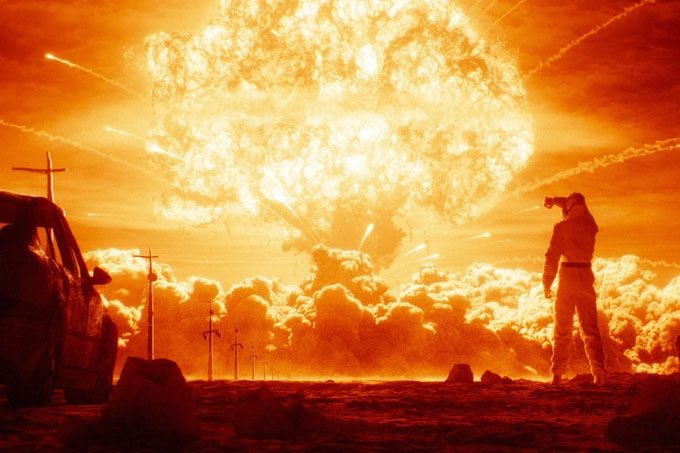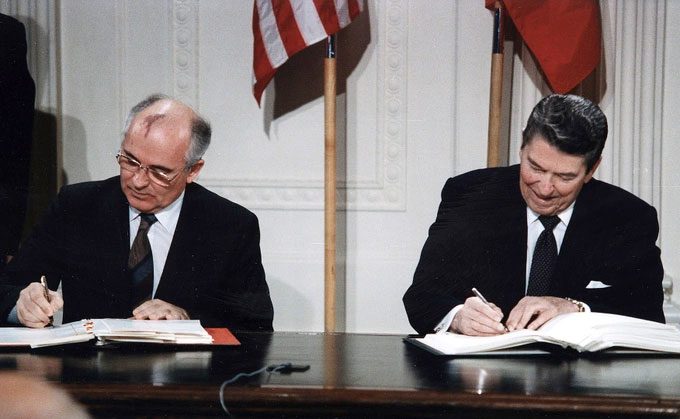The nuclear threat on Earth has not vanished but is more present than ever. In the event of a nuclear conflict, the consequences could plunge the world into a thousand-year-long ice age.
A recent study reveals that a nuclear war, if it breaks out, would have severe repercussions for humanity and Earth’s infrastructure, creating a “nuclear winter” lasting thousands of years, as opposed to the hundreds of years suggested by previous studies.

Nuclear radiation and extreme temperatures from explosions will leave millions affected by radioactive materials, leading to a nuclear winter. (Illustrative image: Science et Vie).
The Fear of Nuclear War
The ongoing conflict between Russia and Ukraine has reignited fears of nuclear conflict, instilling a dread of a potential catastrophic disaster.
The firepower from nuclear explosions would be devastating to global infrastructure and populations. The temperature and shockwaves would obliterate everything in their path, resulting in thousands or even millions of deaths, depending on the power of the “machine” used.
Nuclear radiation would infiltrate the human body, ravaging cells and causing genetic mutations in survivors, leading to prolonged suffering and eventual death.
Notably, a nuclear war would initiate a nuclear winter lasting anywhere from several hundred to thousands of years.
In 1983, American and Russian researchers conducted a study demonstrating that the smoke and dust from nuclear war would create a nuclear winter.
This means that sunlight would be blocked for many years, causing global cooling with long-lasting impacts on Earth’s climate system, resulting in catastrophic consequences for agriculture, ecosystems, and humanity.
How the Fear of “Nuclear Winter” Protected the World
The fear of nuclear winter helped the world to end the nuclear arms race in the 1980s.
On December 8, 1987, General Secretary of the Central Committee of the Communist Party of the Soviet Union Mikhail Gorbachev (1931-2022) and U.S. President Ronald Reagan (1911-2004) took historical steps to reduce the number of nuclear weapons by signing the Intermediate-Range Nuclear Forces Treaty (INF).

Mikhail Gorbachev (left) and Ronald Reagan signing the Intermediate-Range Nuclear Forces Treaty in 1987. (Photo: The White House).
The treaty aimed to dismantle cruise missiles and ballistic missiles carrying nuclear or conventional warheads, which are capable of traveling between 500 and 5,500 kilometers.
It is important to note that at the peak of the nuclear arms race in the mid-1980s, there were over 65,000 such weapons in existence globally. Today, this number has decreased to around 12,000.
In 1982, climatologists Paul Crutzen (1933-2021) and John Birks wrote a paper explaining that a nuclear winter caused by wars utilizing nuclear weapons would reduce global temperatures by 10°C over a decade.
Such low temperatures, combined with reduced sunlight, would hinder photosynthesis in plants, resulting in dire consequences for global food production.
Today, researchers utilize advanced high-tech instruments and artificial intelligence to build much more complex climate models than those available in the 1980s, clearly illustrating the consequences of nuclear war for the world.
Certainly, there are fewer nuclear weapons on this planet today. However, the consequences of a nuclear war, especially on a global scale, may have been underestimated.
A “Little Nuclear Ice Age” Lasting Thousands of Years
Researchers have recently established climate models in the event of a nuclear war, along with a model involving fossil fuel use by humans.
The study’s results are far more pessimistic than what was discussed in the 1980s.
The nuclear conflict model, which could occur between the two major nuclear powers, the United States and Russia, indicates that ocean temperatures could plummet drastically. This would lead the world into a “little ice age” lasting thousands of years.
These two superpowers possess nearly 90% of the world’s nuclear weapons, with Russia having approximately 5,889 warheads and the United States 5,244, in addition to seven other nuclear nations including France, China, the United Kingdom, India, North Korea, Pakistan, and Israel.
Moreover, the research group calculated the consequences of a potential nuclear conflict between Pakistan and India.
A small-scale nuclear conflict of this nature could also kill up to 130 million people. Additionally, it would lead to famine for at least two years, affecting 2.5 billion people.
According to the study, the risk of a tactical nuclear strike between these two countries could escalate into a global nuclear war. This could result in total destruction, with approximately 360 million people worldwide dying and over 5 billion succumbing to starvation.
The research team hopes that world leaders will recognize that these catastrophic consequences could be triggered by just a single nuclear fire.
This awareness could motivate leaders to work together to completely eliminate these weapons of mass destruction, especially as the nuclear threat has not disappeared and may be more pronounced than ever before.


















































